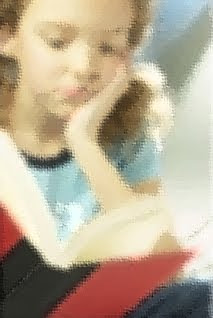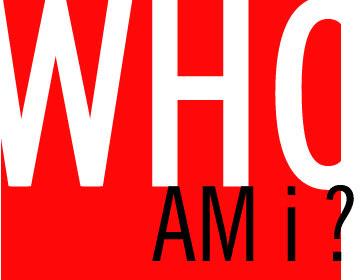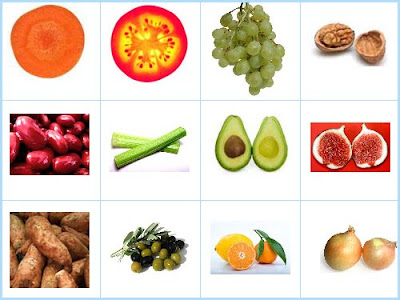Discover India
 Hey Why not i write somethings about india, 'Akhir bharat wasi hoon,main'.My cousin had asked me to make a presentation on India so i surfed the net and found some informations that even i didn't know.Here's a brief introduction of 'Mera Bharat Mahan'
Hey Why not i write somethings about india, 'Akhir bharat wasi hoon,main'.My cousin had asked me to make a presentation on India so i surfed the net and found some informations that even i didn't know.Here's a brief introduction of 'Mera Bharat Mahan'Discover India
India, with an area of 3.3 million sq. km, is a subcontinent. The peninsula is separated from mainland Asia by the Himalayas. The country lies between 8° 4' and 37° 6' north of the Equator and is surrounded by the Bay of Bengal in the east, the Arabian Sea in the west and the Indian Ocean to the south. From its northernmost point on the Chinese border, India extends a good 2000 miles (3200 km) to its southern tip, where the island nation of Sri Lanka seems to be squeezed out of India like a great tear, the synapse forming the Gulf of Mannar. India's northern border is dominated mostly by Nepal and the Himalayas, the world's highest mountain chain. Following the sweeping mountains to the northeast, its borders narrow to a small channel that passes between Nepal, Tibet, Bangladesh, and Bhutan, then spreads out again to meet Burma in area called the "eastern triangle." Apart from the Arabian sea, its western border is defined exclusively by Pakistan.
India. Birthplace of civilizations, cradle of religions, still home to almost a quarter of the world's people. India has dominated the world stage through most of human history, as the home of mighty empires, as a powerful trading nation, and as a wellspring of culture and civilization. India has always intrigued and fascinated the rest of the world. The "fabulous Indies". Rumours of its empires and its wealth brought traders and travelers. Alexander the Great marched across Asia to India. Arab and Jewish traders sailed here. At one time Roman soldiers were barracked here. The ancient Greeks had trading colonies. Columbus wasn't looking for America. He hoped to find a new route to India. European history dramatically favoured nations with an India connection.
India excelled in international trade. Five thousand years ago the thriving cities of the Indus Valley traded with Mesopotamia. Indian traders spread their goods and influence through South East Asia. The Hindu island of Bali is one surviving remnant of a great trading empire. Spices, gems, pearls and silks flowed out of India into the rest of the world. Crafts, textiles, and exotic birds and animals were also traded. Hannibal's elephants came from India. So did many of the lavish fabrics craved by Roman nobility. At one point, so much gold was leaving Rome for India that the Roman economy was seriously weakened. India was the 'Japan' of the ancient world, dominating trade relationships. Ideas and culture spread with trade goods. India gifted a numbering system and mathematics to the world. Philosophy, sciences, and medicine reached unrivalled heights, enriching the great scientific achievements of China and the Arab world. The influences of Indian thought can be found in early European culture, and still today, Indian philosophy is influencing modern global-culture.
India: The World's Largest Democracy
 With a billion people, the Republic of India is the world's largest democracy. India modeled its government on the British parliamentary system, with a healthy dose of influences from the United States and the rest of Europe.
With a billion people, the Republic of India is the world's largest democracy. India modeled its government on the British parliamentary system, with a healthy dose of influences from the United States and the rest of Europe.India is run by a parliament made up of two houses.These two houses are called the Lok Sabha, or "House of the People," and the Rajya Sabha, or "Council of States." Of the two, the Lok Sabha holds more power, but the two houses work together to make the laws of the country. The parliament is located in India's capital, New Delhi.
In just over 50 years, India has gone from being a British colony to being a functioning, independent democracy. It still faces problems. Overpopulation, poverty, and internal strife threaten Indian stability from time to time. Despite these concerns though, the world's largest democracy has survived the past half-century without a government collapse or military takeover.
CULTURE & PEOPLE
With nearly 1 billion citizens, India is the second most populous nation in the world. It is impossible to speak of any one Indian culture, although there are deep cultural continuities that tie its people together. English is the major language of trade and politics, but there are fourteen official languages in all. There are twenty-four languages that are spoken by a million people or more, and countless other dialects. India has seven major religions and many minor ones, six main ethnic groups, and countless holidays.
Religion is central to Indian culture, and its practice can be seen in virtually every aspect of life in the country. Hinduism is the dominant faith of India, serving about 80 percent of the population. Ten percent worship Islam, and 5 perscent are Sikhs and Christians; the rest (a good 45 million) are Buddhists, Jains, Bahai, and more.
Indian languages
India's official language is Hindi in the Devnagri script. However, English continues to be the official working language. The country has a wide variety of local languages and in many cases the State boundaries have been drawn on linguistic lines. Besides Hindi and English, the other popular languages are Assamese, Bengali, Gujarati, Kannada, Kashmiri, Konkani, Sanskrit, Sindhi, Tamil, Malayalam, Marathi, Punjabi, Oriya, Telugu and Urdu.
Some Indian languages have evolved from the Indo-European group of languages. This set is known as the Indic group of languages. The other set of languages are Dravidian and are native to South India, though a distinct influence of Sanskrit and Hindi is evident in these languages. Most of the Indian languages have their own script and are spoken in the respective states along with English.
TRAVEL - INDIA
Taj- Many assert that the Taj Mahal is the most beautiful structure in the world. Resting on the banks of the River Yamuna, its a monument inspired by love.
Rajasthan-The desert ruins of the Rapjut can still be visited, as can the Thar's remote temples, village oases, and hyponotic, swirling sands.
Laddak -One of the most remote and mythical regions of India, Ladakh is a landscape of unearthly beauty. Ladakh's biggest attraction are its ancient gompas, or Buddhist monasteries, which contain some of Asia's greatest wonders of gold and tapestry work.
Himalayas- For the adventurous mountain trekker, few destinations are more magnetic than the Himalayas. Their towering peaks and glaciers represent the ultimate experience in mountaineering, and for many a journey into the Himalayas is really more like a pilgrimage.
. Darjeeling - the British started to develop the region as a summer retreat shortly after they arrived there in 1828. Darjeeling soon became a haven for tea growing as well, and its cool and misty tea plantations are among the most idyllic attractions in India.
Kerala -Sliver of dense greenery sandwiched between the Arabian Sea and the forested Western Ghat mountains, the state of KERALA – GODS OWN COUNTRY.
GOA - Sun & Sand of the BEACHES of GOA.
Plenty of National Parks & Sanctuary all over india.
Fairs and Festivals
The Indian calendar is one long procession of festivals. There are innumerable national, regional, religious, seasonal and social festivities,considering the fact that India is the land of gods, goddesses, saints, gurus and prophets.Festivals here are characterised by colour, gaiety, enthusiasm, feasts and a variety of prayers and rituals. Travellers are struck by the scale and multiplicity of the festivities that populate the cultural scene of this land.Major Festivals of India are Holi ,Diwali,Dussehra ,Baisakhi and other harvest festivals ,Onam ,Eid , Guru Purnima , Christmas, Raksha Bandhan, Ganesha Chaturthi,Janmashtami,Pongal,Lohri,etc
Religions
In India, religion is a way of life. It is an integral part of the entire Indian tradition. For the majority of Indians, religion permeates every aspect of life, from common-place daily chores to education and politics. Secular India is home to Hinduism, Islam, Christianity, Buddhism, Jainism, Sikhism and other innumerable religious traditions. Hinduism is the dominant faith, practised by over 80% of the population. Besides Hindus, Muslims are the most prominent religious group and are an integral part of Indian society. In fact India has the second largest population of Muslims in the world after Indonesia.
Dance in India has seeped into several other realms like poetry, sculpture, architecture, literature, music and theatre. The earliest archaeological evidence is a beautiful statuette of a dancing girl, dated around 6000 B.C. Bharata's Natya Shastra is the earliest available treatise on dramaturgy.
Various dance forms are Bharatnatyam-Tamil Nadu , Kathak-Uttar Pradesh,Kathakali-Kerala ,Kuchipudi - Andhra Pradesh,Manipuri- manipur ,Mohiniyattam - Kerala,Odissi-Orissa,Chauu dance of Bihar, Garba of Gujarat and Bhangra of Punjab and Banjara of Andhra Pradesh,Popular Folk Dances of India
The Indian Music Tradition
The Indian Musical tradition has two dominant strains: the Carnatic or South Indian music and the Hindustani or North Indian music. The Carnatic and the Hindustani music have some features in common as their heritage and philosophy is essentially the same. However their ragas and their articulation are usually distinctive.
Today, there is a lot of interaction and concourse between music from the north and that from the south. Both styles are influencing each other and this can only lead to an enrichment of the great musical tradition of India.
INDIAN CLOTHING
To the foreign traveller, one of the powerful attractions in India is the colourful and diversified attire of its people. The silk saris, brightly mirrored cholis, Dhotis, Kurtas, colorful lehangas and the traditional salwar-kameez have fascinated many a traveler over the centuries. Indian dressing styles are marked by many variations, both religious and regional and one is likely to witness a plethora of colors, textures and styles in garments worn by the Indians.
INDIAN CUISINE
The food available in India is as diverse as its culture, its racial structure, its geography and its climate. The essence of good Indian cooking revolves around the appropriate use of aromatic spices.
The skill lies in the subtle blending of a variety of spices to enhance rather than overwhelm the basic flavor of a particular dish. These spices are also used as appetizers and digestives.
Although a number of religions exist in India, the two cultures that have influenced Indian cooking and food habits are the Hindu and the Muslim traditions. The Portuguese, Persians and British made important contributions to the Indian culinary scene. It was the British who started the commercial cultivation of tea in India.
National Flag
National Flag: The Indian flag was designed as a symbol of freedom. The late Prime Minister Pandit Jawahar Lal Nehru called it a flag not only of freedom for ourselves, but a symbol of freedom to all people. The flag is a horizontal tricolour in equal proportion of deep saffron (kesari) on the top, white in the middle and dark green at the bottom. The ratio of the width to the length of the flag is two is to three. In the centre of the white band, there is a wheel in navy blue to indicate the Dharma Chakra, the wheel of law in the Sarnath Lion Capital. Its diameter approximates the width of the white band and it has 24 spokes. The saffron stands for courage, sacrifice and the spirit of renunciation; the white, for purity and truth, the green for faith and fertility.The Constituent Assembly adopted the design of the National Flag on 22 July 1947.
Indian National Emblem
The National emblem of India is a replica of the Lion of Sarnath, near Varanasi in U.P. The Lion Capital was erected in the third century BC by Emperor Ashoka to mark the spot where Buddha first proclaimed his gospel of peace and emancipation to the four quarters of the universe. The four lions - symbolising power, courage and confidence - rest on a circular abacus.
The abacus is girded by four smaller animals - guardians of the four directions: the lion of the north, the elephant of the east, the horse of the south and the bull of the west. The abacus rests on a lotus in full bloom, exemplifying the fountainhead of life and creative inspiration. The motto "Satyameva Jayate" inscribed in Devanagari script means "truth alone triumphs".The Government of lndia adopted the National Emblem on 26 January 1950.
Indian National Song - Vande Mataram
The song Vande Mataram was composed by Bankimchandra Chatterji, is a source of inspiration. The following is the text of its first stanza:
Vande Mataram!
Sujalam, suphalam, malayaja shitalam,
Shasyashyamalam, Mataram!
Shubhrajyotsna pulakitayaminim,
Phullakusumita drumadala shobinim,
Suhasinim sumadhura bhashinim,
Sukhadam varadam, Mataram!
FATHER OF THE NATIONSujalam, suphalam, malayaja shitalam,
Shasyashyamalam, Mataram!
Shubhrajyotsna pulakitayaminim,
Phullakusumita drumadala shobinim,
Suhasinim sumadhura bhashinim,
Sukhadam varadam, Mataram!
M. K. Gandhi, as the photograph itself demonstrates, was a passionate opponent of modernity and technology, preferring the pencil to the typewriter, the loincloth to the business suite, the plowed field to the belching manufactory
Gandhian nonviolence is widely believed to be the method by which India gained independence. He was responsible for the transformation of the demand for independence into nationwide mass movement that mobilized every class of society against the imperialist, yet the free India that came into being, divided and committed to a program of modernization and industrialization, was not the India of his dreams.
National Anthem:
JANA-GANA-MANA by Rabindranath Tagore
National Animal - Tiger: Large Asiatic carnivorous feline quadruped, Panthera Tigris, maneless, of tawny yellow colour with blackish transverse stripes and white belly, proverbial for its power and its magnificence
National Bird - Peacock: Peacocks are related to pheasants. Found wild in India(and also domesticated in villages) they live in jungle lands near water. They were once bred for food but now hunting of peacocks is banned in India.
National Flower - Lotus: In India, the sacred lotus is legendary and much folklore and religious mythology is woven around it.
National Fruit - Mango:The poet Kalidasa sang its praises. Alexander savoured its taste, as did the Chinese pilgrim Hieun Tsang. Akbar planted 100,000 mango trees in Darbhanga, known as Lakhi Bagh
Interesting facts about India
India never invaded any country in her last 10,000 years of history. Mahatma Gandhi and Mother Teresa, the Saint of Calcutta as she was called, are considered the greatest apostles of peace of the twentieth century.
The concept of the number zero was created in India by the sage Aryabhatta. The place value system and the decimal system were also developed in India in about 100 B.C.
The world's first University was established in Takshashila in about 700 B.C. More than 10,500 students from all over the world studied more than 60 subjects.
Sanskrit is the mother lode of all the Indo-European languages. Sanskrit is the most suitable language for computer software, says a report in Forbes magazine, July 1987.
Ayurveda is the earliest school of medicine known to mankind. Charaka, the father of medicine, consolidated Ayurveda 2500 years ago.
Sushruta is the father of surgery. 2600 years ago he and physicians of his period were conducting surgical procedures like caesarean, cataract, artificial limbs fitment, fracture treatment
The strategy game of Chess was invented in India.
India was the richest country on earth until after the coming of the British in the17th century. Christopher Columbus was attracted by her wealth. British, French, Portuguese, Dutch, Danish, and other "adventurers" were racing against each other to establish trading privileges in India. It was known as the true land of milk and honey.











Comments
Post a Comment